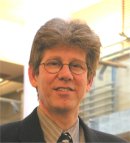Plenary Lecture
Thermodynamic Analysis Based on the Second Law Using Exergy: Illustrative
Applications of aSize-Based
Assessment Hierarchy

Professor Marc A. Rosen
Faculty of Engineering and Applied Science
University of Ontario Institute of Technology
Oshawa, Canada
and
President of Engineering Institute of Canada
E-mail: M.Rosen@uoit.ca
Abstract: Exergy analysis has been increasingly applied over the last
several decades to systems of various sizes, ranging from nano-sized to
planetary. Despite the wide range of application sizes, little research has
been carried out on how the size of application affects the manner in which
exergy is used. Through examining and performing many exergy analyses, the
author has previously observed that there appear to be trends related to the
application size and the way in which an exergy analysis is performed. The
most appropriate way of applying exergy analysis appears to be dependent on
the application size, whether considering a device or micro- or nano-sized
subsection of it, or a large macrosystem like a country, or a planetary
system. An understanding of these size considerations can help guide users
of exergy analysis to the most suitable manner of application for a given
system.
The six size categories follow, from smallest to largest:
-Sub-device: A sub-device is a part of a device, e.g., a row of blades on
the turbine, or an individual blade, or a section of a blade, and can extend
to micro- and nano-sized parts of devices.
-Device: Devices are taken to be the individual components that make up
systems.
-Simple system: A simple system is taken here to be a system made up of a
small number of devices (usually less than six).
-Complex system: A complex system is taken here to be a single system made
up of many devices (usually much more than six, and often over 50). These
values are not scientifically defined, but are simply illustrative ways of
dividing the categories.
-Macrosystem: A macrosystem is considered as a grouping of complex systems,
often involving multiple facilities over a region like a community, city,
province or country.
-Planetary-scale system: Planetary-scale systems include planets, primary
sections of a planet (e.g., the atmosphere), and larger systems like the
sun.
In this article, each application category is illustrated with an example.
Several conclusions are drawn from the work: 1) the various systems
investigated with exergy analysis exhibit size-related trends regarding how
the analysis is performed, 2) the most appropriate way of applying exergy
analysis appears to be dependent on the size of the application, and 3) the
size-based hierarchy helps identify the manner in which exergy analysis can
most appropriately be applied for a given system. An understanding of these
size considerations can help users of exergy analysis determine the most
suitable manner of application for a given system and avoid confusion and
wasted effort, thereby improving the usability and utilization of exergy
analysis for energy systems.
Brief Biography of the Speaker:
Dr. Marc A. Rosen is a Professor of Mechanical Engineering at the University
of Ontario Institute of Technology in Oshawa, Canada, where he served as
founding Dean of the Faculty of Engineering and Applied Science from 2002 to
2008. Dr. Rosen became President of the Engineering Institute of Canada in
2008. He was President of the Canadian Society for Mechanical Engineering
from 2002 to 2004, and is a registered Professional Engineer in Ontario.
With over 60 research grants and contracts and 500 technical publications,
Dr. Rosen is an active teacher and researcher in thermodynamics, energy
technology (including cogeneration, district energy, thermal storage and
renewable energy), and the environmental impact of energy and industrial
systems. Much of his research has been carried out for industry.
Dr. Rosen has worked for such organizations as Imatra Power Company in
Finland, Argonne National Laboratory near Chicago, and the Institute for
Hydrogen Systems near Toronto. He was also a professor in the Department of
Mechanical, Aerospace and Industrial Engineering at Ryerson University in
Toronto, Canada for 16 years. While there, Dr. Rosen served as department
Chair and Director of the School of Aerospace Engineering.
Dr. Rosen has received numerous awards and honours, including an Award of
Excellence in Research and Technology Development from the Ontario Ministry
of Environment and Energy, the Engineering Institute of Canada’s Smith Medal
for achievement in the development of Canada, and the Canadian Society for
Mechanical Engineering’s Angus Medal for outstanding contributions to the
management and practice of mechanical engineering. He is a Fellow of the
Engineering Institute of Canada, the Canadian Academy of Engineering, the
Canadian Society for Mechanical Engineering, the American Society of
Mechanical Engineers and the International Energy Foundation.